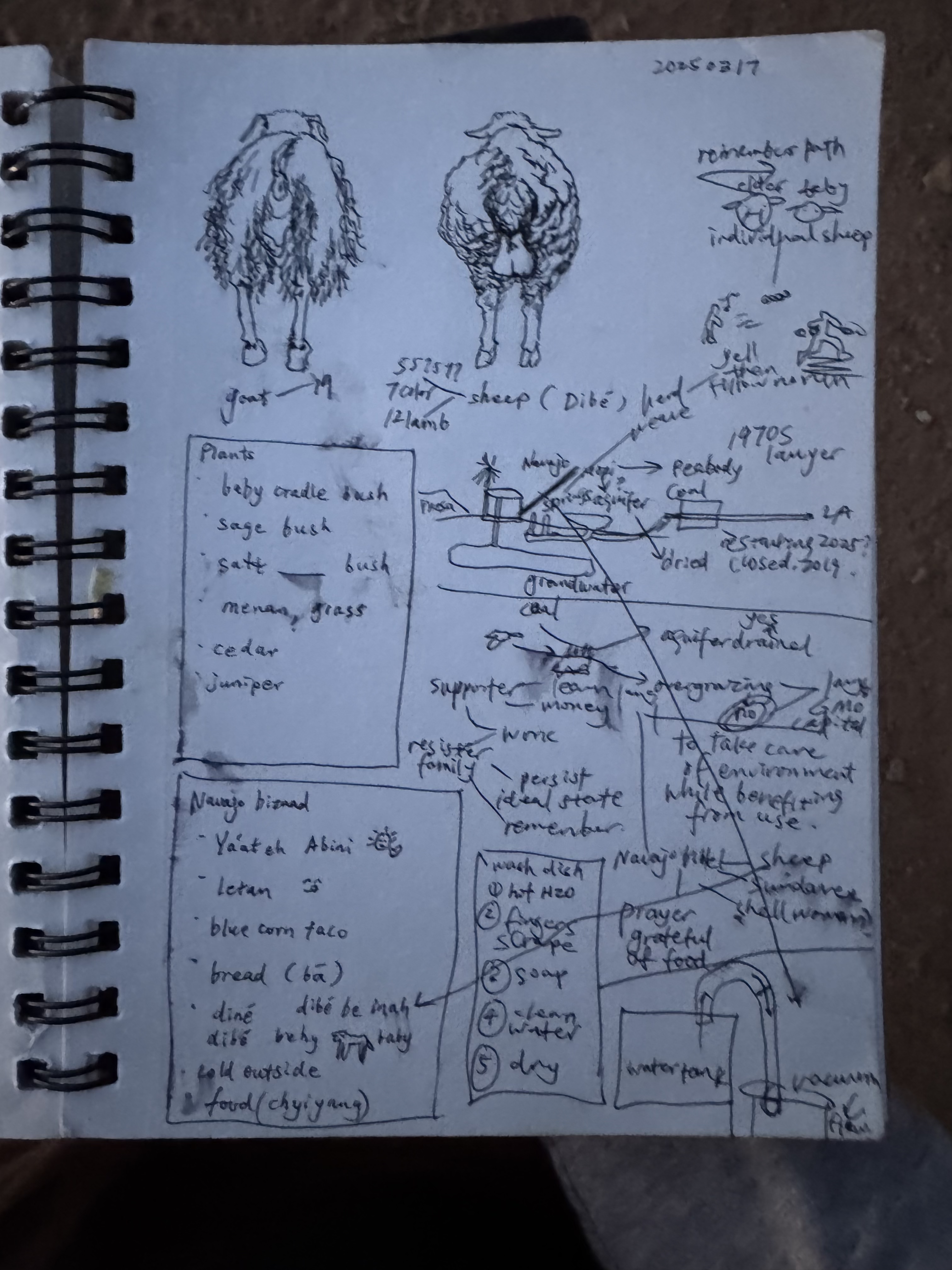Acknowledgements
The Lanes family and Natalie for teaching a newbie how to herd sheep.
How do sheep behave?
- to human: they tend to look me in the eye. when i walk towards them they tend to go in the opposite direction. when i circle around them and confuse them about where to go they sometimes stand and stare at me. when i push one that is eating they sometimes don’t budge and sometimes grunt yell at me and sometimes jump away.
- to each other: when the lambs try to escape from me, they try to squeeze in between big sheep.
- to terrain
- to hills: the flock tends to split up and lose sight of the other subflock when there’s a tall rocky hills with good food.
- to canyons: sometimes mothers who are heavier underestimate the cliff and break their leg
- to pastures: they seem to spread out parallel to original direction and aggregate at bushes and trees
- to different plants: sheep tend to like juniper tree, salt bush (ish), many grasses.
- to dogs: they fight with their head if the dog tries to bite them. in the corral a dog that sleeps there at night licks the booger off their noses.
- to wind: I thought the sheep on the open pasture turn to be orthogonal to the wind if the wind rises. but Zeena (elder) said no.
- to getting left behind: some sheep yell when getting left behind. some sheep run. some sheep keep eating without hurrying.
- to seeing others left behind: some sheep yell at the ones left behind.
- to goats: they seem to be ok with each other. they sometimes eat from the same tree. but goats tend to stick with each other (or specific food type) rather than with sheep.
- to mothers giving birth: according to Natalie who facilitated birth of two lambs in one day, the other sheep don’t do anything they just keep going home.
What are the different human shepherd strategies?
- Strategy: Jesus
- Description: A good shepherd sleeps in the corral at night, acts as the gate to protect the herd, makes the herd follow by simply calling their names that the herd recognizes and follows, increases the herd by bringing more sheep into the corral and flock, brings the flock to good life (grass, safety).
- Source: On 2025.03.23 Sunday, we went to the Church of Nazareen in Shonto. Eda Smallcanyon gave the bible study on the verses on Jesus as the gate and shepherd.
- Strategy: Irish
- Description: dogs know how to run to push the herd in cohesion and in steering.
- Source: Natalie (the previous supporter at the Lanes family)
- Strategy: Navajo / Lanes
- Description: the human uses sounds (tz, tz), running (in U shape) and being in certain position in the herd (in front to slow down, in back to speed up). the dogs don’t help with herding, they only protect sheep from coyote, the dogs are coming along to hunt for rabbits. when it’s hot in the summer they herd in the early morning then again in evening. in the normal times they herd from morning to afternoon, at least 4.5 hours. if they don’t walk all the way, they (1) shoo the sheep out on their own and use truck to get them back or let them get back on their own (2) put hay in the corral so they eat but don’t go.
- Source: Natalie, Lanes
- Strategy: Mongolian
What are beginner’s mistakes in shepherding?
- When going out from home, letting the mother sheep sneak from the flock back to the lamb corral because she is worried about the lamb.
- Forgetting to put water for the sheep before herding, so when the sheep is back and thirsty they don’t have water to drink.
- Going less than 4.5 hours (not eating enough) because (1) sleepy, (2) didn’t go a long enough route and couldn’t slow down or circle around.
- When coming home, letting the mother sheep run out of sight to their lambs, that might let them get caught by coyotes.
Notes
on shepherding and wayfinding, at the navajo nazareen church
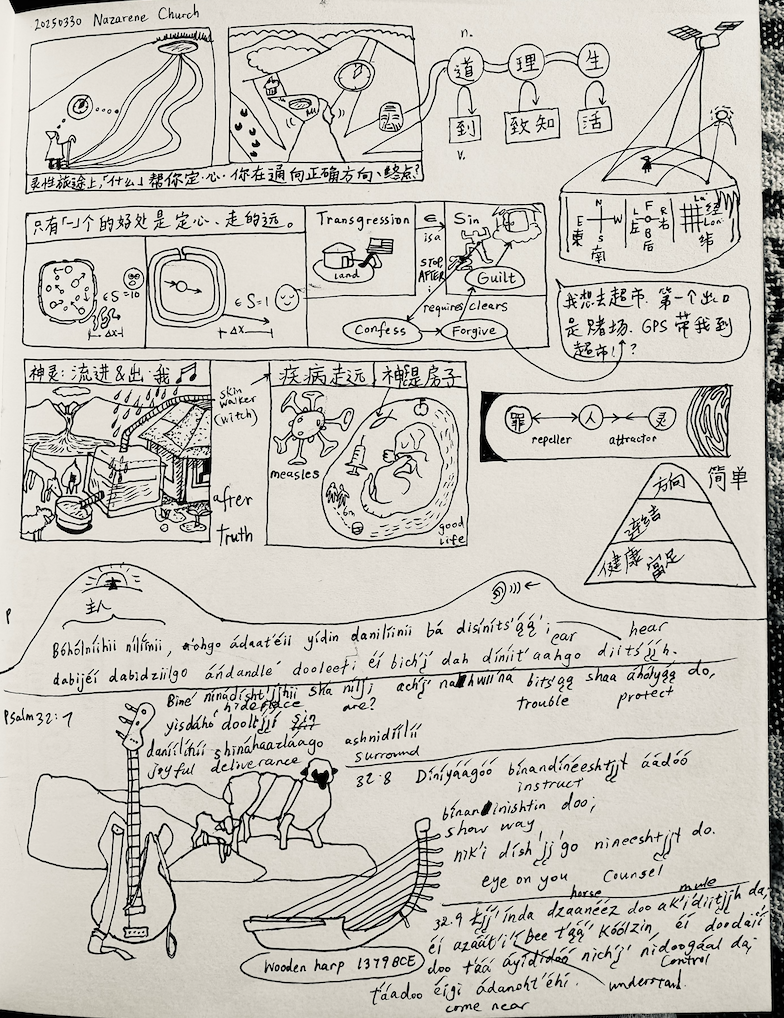 system mapping of black mesa resistance
system mapping of black mesa resistance
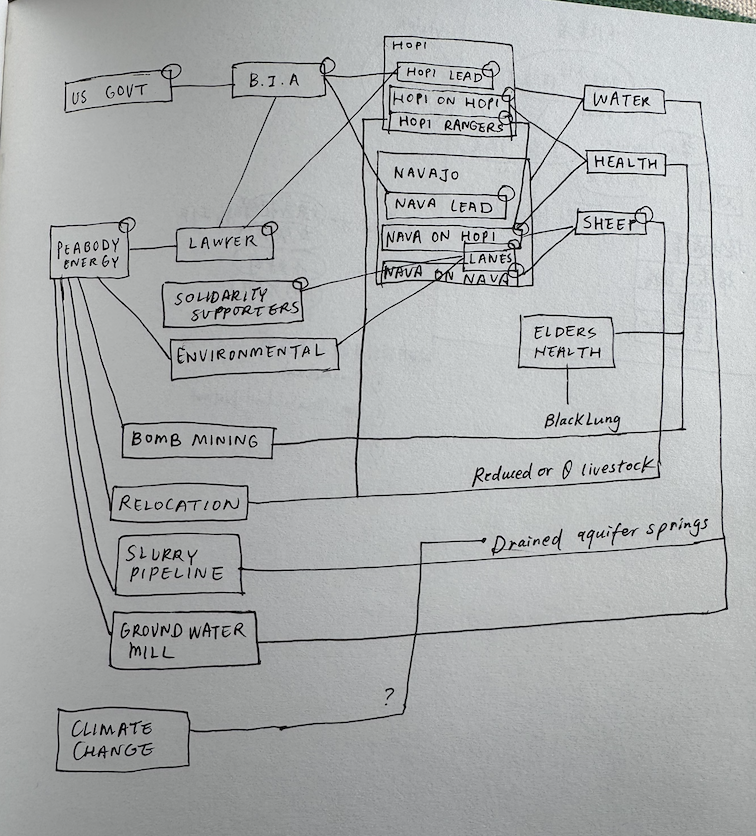 funny animal interactions
funny animal interactions
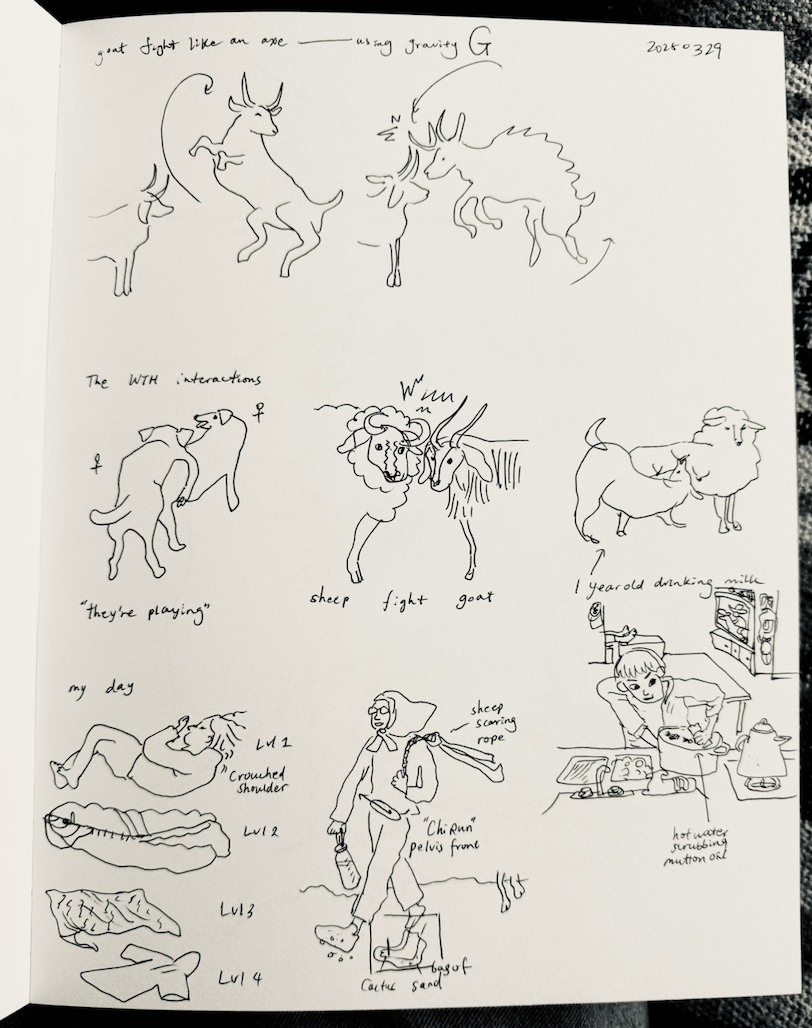 hogan (clay house)
hogan (clay house)
 hogan texture detail
hogan texture detail
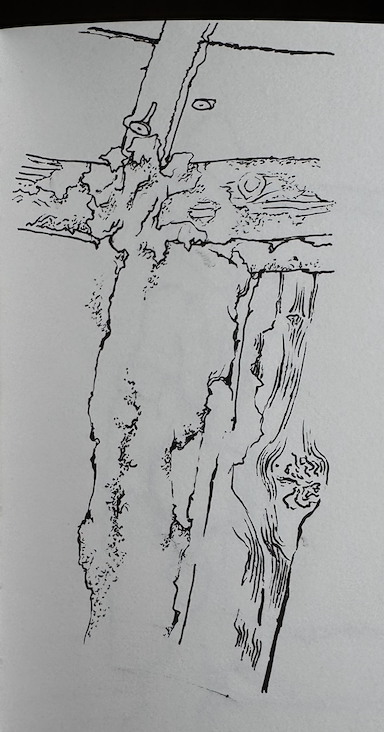 how to catch lambs
how to catch lambs
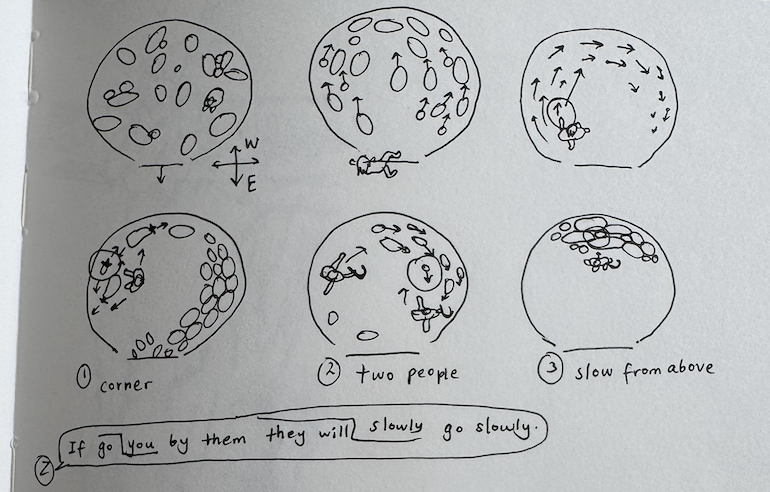 map and routes of the black mesa region
map and routes of the black mesa region 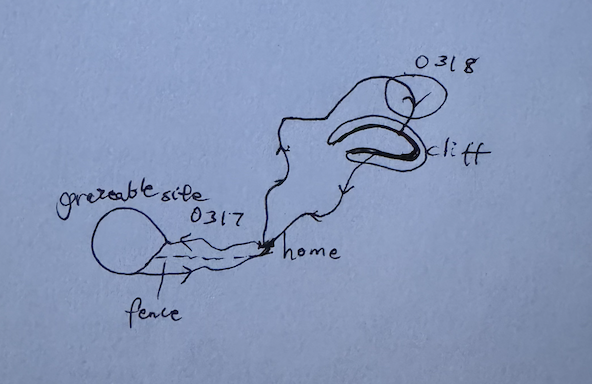 the navajo church interpretation of the jesus shepherd verses
the navajo church interpretation of the jesus shepherd verses 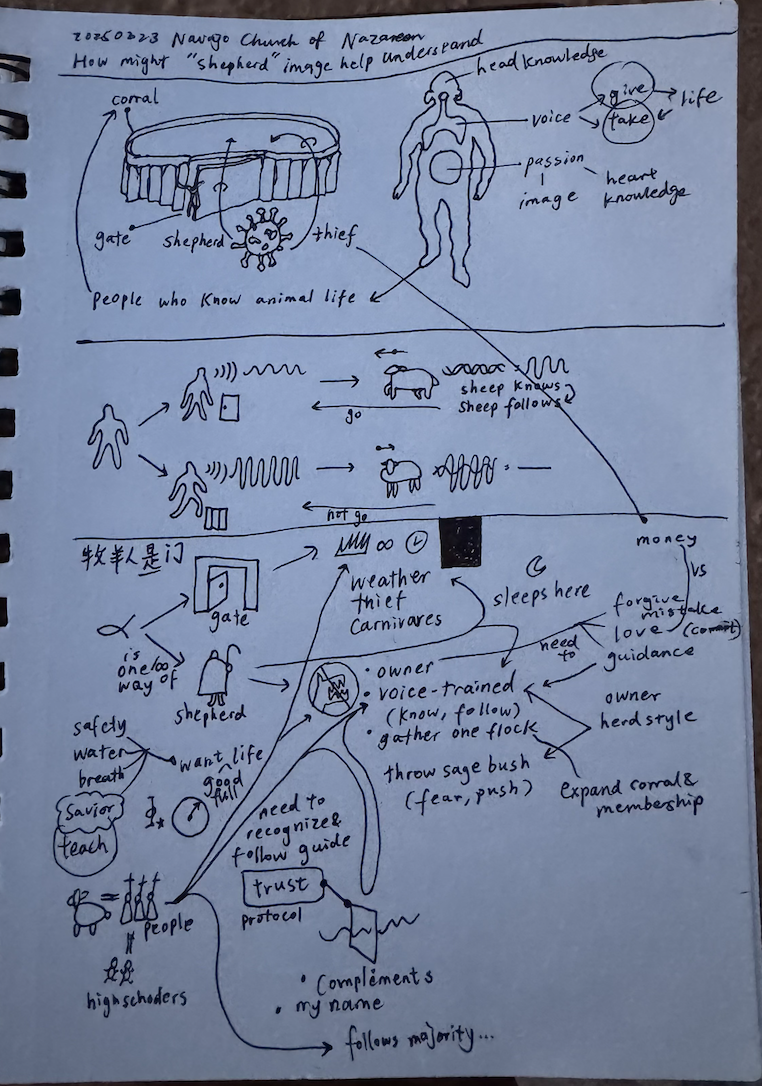 some patterns i see in the herding
some patterns i see in the herding 
the terrain with the main landmarks (black mesa, red mesa, white mesa, middle mesa, san francisco peaks, wildcat peaks) 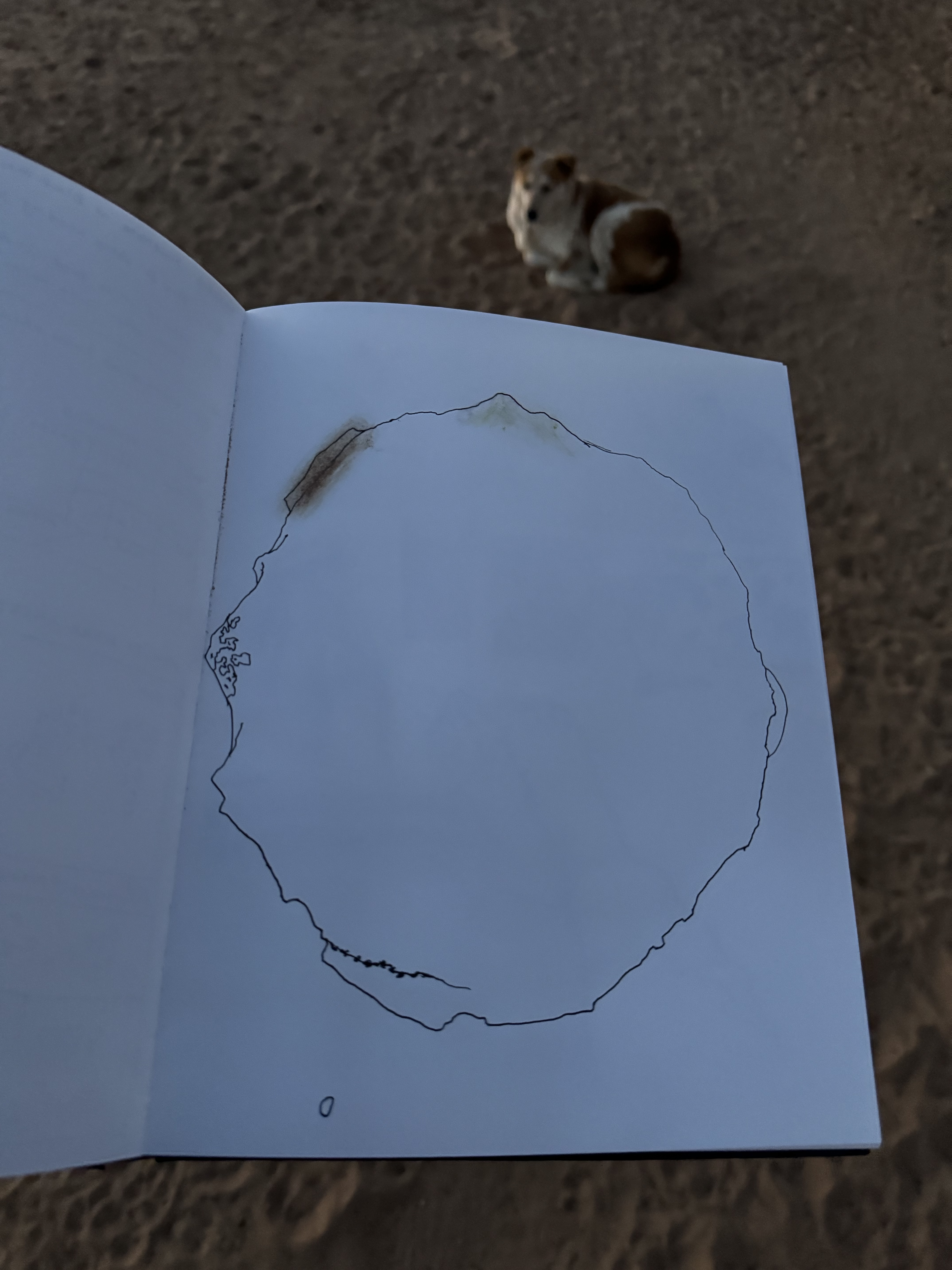
how to tell sheep from goat with hair and head; plants here they eat 